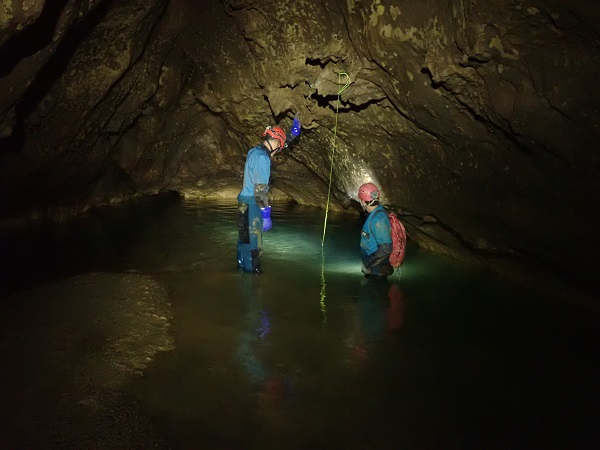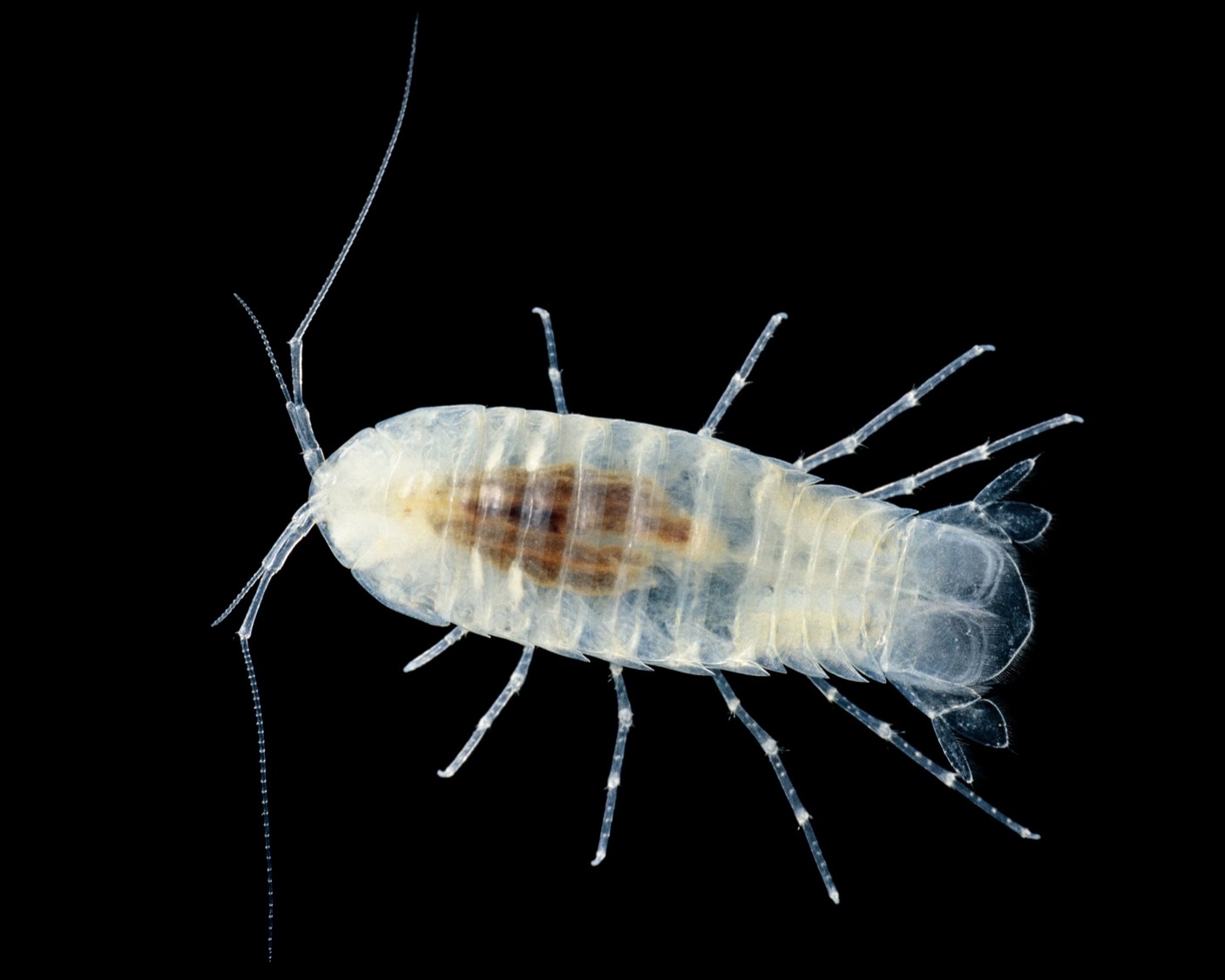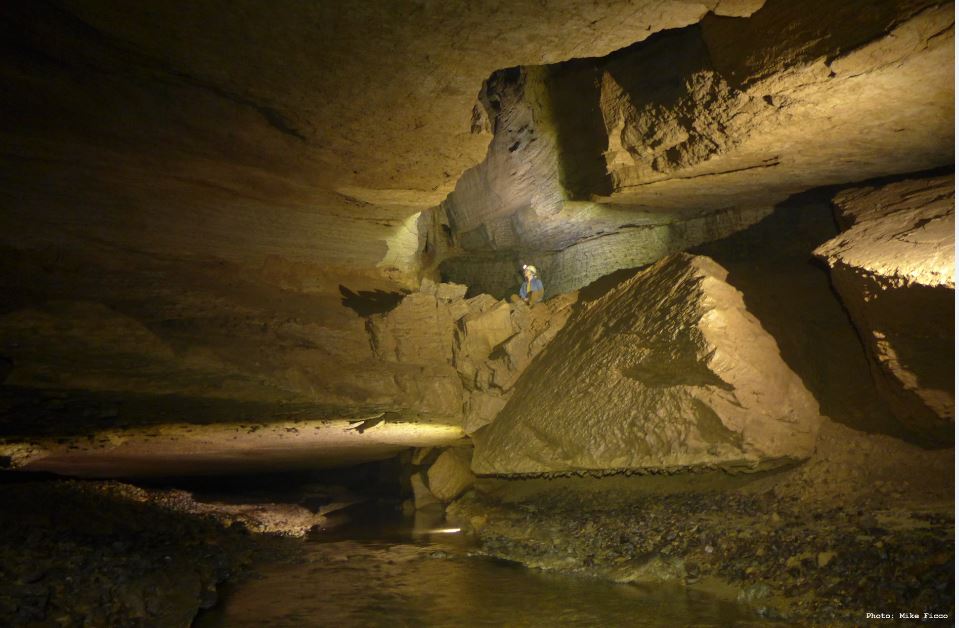
 Department of Conservation and Recreation
Department of Conservation and Recreation
Conserve. Protect. Enjoy.
 Department of Conservation and Recreation
Department of Conservation and Recreation
The term karst refers to landscapes created by the dissolving of bedrock. Most karst was formed as carbonate bedrock - limestone, dolomite, or marble - dissolved by mildly acidic waters over thousands of years. Much of this process took place below ground, forming networks of interconnected caves. Not all rocks are soluble. Virginia's Valley and Ridge Province, where most of the state's karst is found, consists mainly of sandstone, shale, limestone, and dolomite, but only the carbonates are soluble, and are exposed on valley floors and along the flanks of some ridges.

Complex underground drainage networks in karst commonly extend over large areas and beneath surface drainage divides. Precipitation enters these groundwater systems both by infiltration through soils developed over carbonate bedrock and by runoff into features such as sinkholes, sinking and losing streams. Once underground, these 'karst waters' flow through networks of caves, mostly uncharted and inaccessible, and combine to emerge at springs. Karst hydrologists undertake the tricky business of mapping connections between these features to define 'karst watersheds', which typically refer to a particular spring or cave stream.
In karst, surface waters flow quickly underground with little filtration or dilution. Once underground, depending on the local geology, contaminants can travel rapidly over long distances or may be stored in aquifers for long periods of times. In either case, these waters, along with any contaminants, eventually return to the surface through springs and wells and can impact both aquatic life and drinking water. Unless karst hydrologists have studied a karst area, responding to contamination there can be difficult to impossible. Protection of karst requires both the study of karst systems and the conservation of karst features.

Karst provides and supports habitat for rare animal and plant species, including bats, cave-adapted invertebrates, plants that grow on the surface and at springs and seeps, and fish and mussels living in streams and rivers fed by karst springs. Additionally, many private and public water supplies in Virginia rely on karst groundwater.
Caves in Virginia are protected by the Virginia Cave Protection Act, which prohibits vandalizing caves, formations or artifacts, polluting caves, or disturbing cave organisms.


